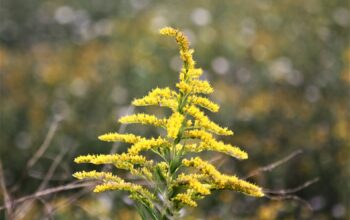
You may have spotted this plant growing wild along ditches and woodlines, its bright yellow flowers standing out against dark green narrow leaves, with crimson highlights along its branches and stems. Blooming this time of year, its flowers resemble those of the buttercup, or the closely related evening primrose.

The Mexican primrose-willow (Ludwigia octovalvis) is an adaptable wildflower found in Central America, Australia, South-East Asia, the Middle East, and the Central-West African regions. It is considered invasive in some Pacific Islands. Here in the US it is prolific in the southeastern region. It is a perennial deciduous shrub in the evening primrose family (Onagraceae), growing 3 – 6 feet tall.
A water-lover, the Mexican primrose-willow can be found along muddy embankments or floating in adjacent or shallow waters. For this reason it is cultivated as an aquatic plant. It is also called a narrow-leaf water primrose.

Ludwigia octovalvis – a Drink to Longevity?
Mexican Primrose-willow has long been toted for its medicinal uses in indigenous cultures, specifically for its purported anti-aging effects. A study done on fruit flies and lab mice showed significant promise to this effect, noting the plants’ “high levels of polyphenols and flavonoids, which possess strong DPPH radical scavenging activity”. www.ncbi.nlm.nih.gov

Other studies indicate that the digestive enzyme inhibitors from Ludwigia octovalvis can be beneficial in treatments for obesity and diabetes. The Mexican primrose-willow is also known for its antioxidant and antibacterial properties, as well as its use as a gastrointestinal aid and as a diuretic, of which many studies have been done.




